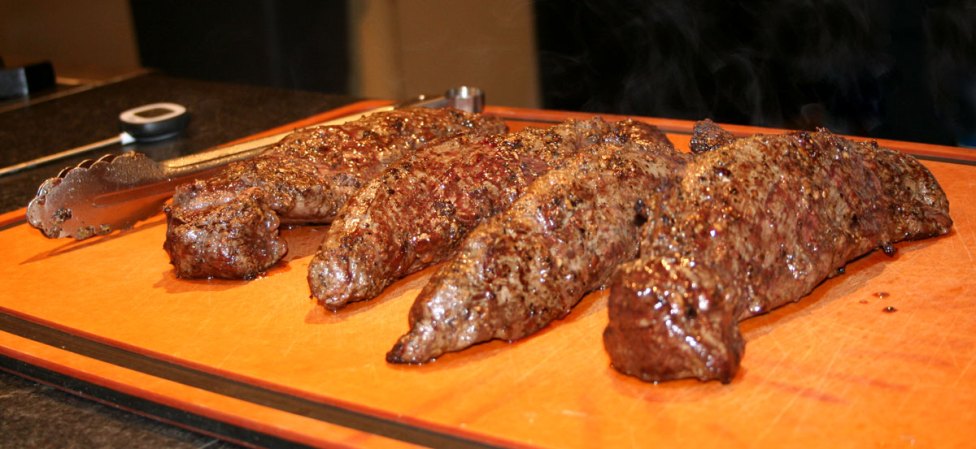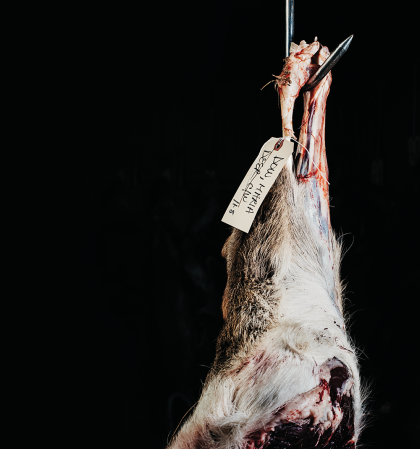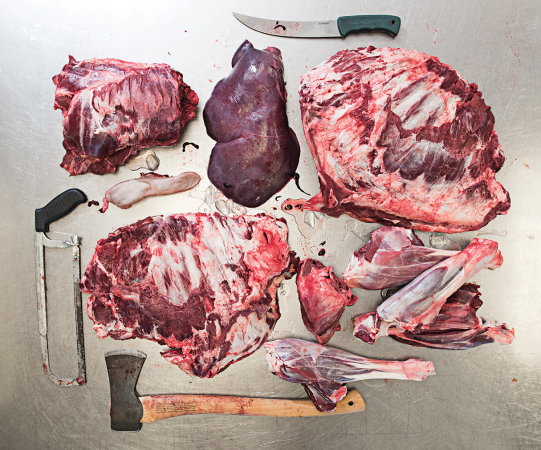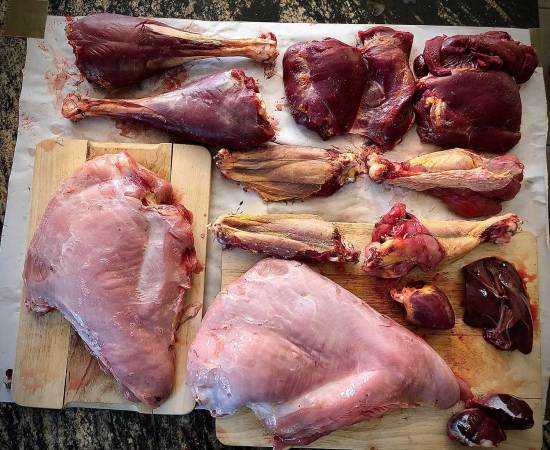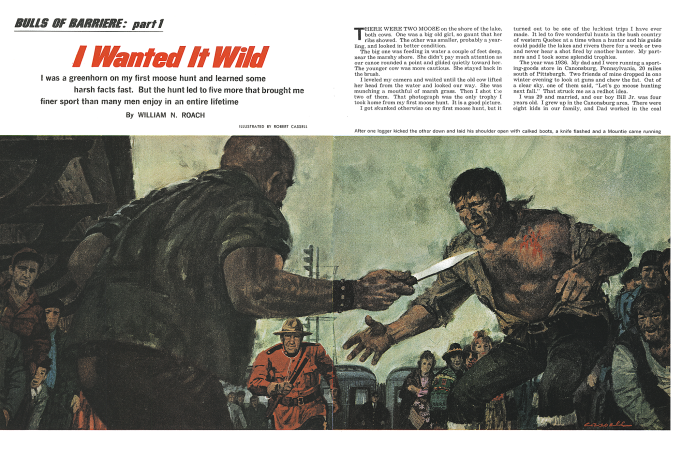It’s probably safe to say that most of us are perfectly adequate at filleting fish, but when approached with a deep sea monster like this big halibut, we would probably do more head scratching than cutting. That’s definitely not the case with my buddies at Afognak Wilderness Lodge, however. These guys clean more fish on a daily basis than most people (including myself) process in a year’s time.
Needless to say, they have the system down. Even with some hands-on help, I was embarrassed by how slow I was compared to everybody else. Garrett Wood, one of the lodge staff, patiently showed me the different techniques for each species of fish, explaining that it took him about 50-60 fish to really get the feel of it. Filleting is all about feel. It’s quite a bit different than the knife work I’m used to–skinning furry critters–and requires long, smooth strokes and really employs the flex of the blade.
To fillet the halibut, you make a cut down the length of the spine, then across the front of the fillets. Make sure you don’t cut through and into the stomach: That fillet will be shorter. The rest is really pretty simple. As you peel back the fillet from the spine, make long, smooth cuts, flexing the knife blade down onto the ribs to get all the meat until you get to the skin at the bottom of the fillet. If the fish is large enough, you can take the cheeks out by inserting the knife at the back of the muscle on the gill plate, cutting underneath it to flip it over, then peeling it off the hard plate under the skin.
The crew at Afognak Wilderness Lodge are pros, and make removing perfect, boneless fillets look effortless. Take a look at how easy Mckenzie makes filleting this 150-pound halibut look. Keep in mind that these are totally boneless fillets!


